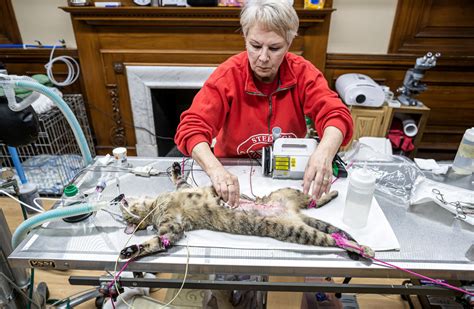Feral Cat Post-Op Care & Successful Reintroduction: A Guide for Compassionate Caregivers
Feral cats, often misunderstood and feared, are resilient creatures that can benefit greatly from compassionate intervention. When surgery is necessary – whether for sterilization (TNR – Trap-Neuter-Return), injury repair, or illness treatment – proper post-operative care is crucial for their survival and successful reintroduction to their environment. This guide provides essential information for anyone involved in the care of feral cats post-surgery.
Understanding the Unique Challenges of Feral Cat Post-Op Care
Feral cats present unique challenges compared to domestic cats. Their inherent fear of humans makes handling stressful, and their independent nature complicates recovery. They lack the trust and comfort that domestic cats receive from their owners, making pain management and monitoring more demanding.
How is post-op care for feral cats different?
The key differences lie in minimizing stress and maximizing independence. While domestic cats might tolerate close monitoring and frequent handling, feral cats require a gentler, more hands-off approach. This involves careful cage design, appropriate pain management, and gradual reintroduction to their territory.
Immediate Post-Operative Care: The First 24-48 Hours
The first 48 hours are critical. The cat should be housed in a quiet, dark, and secure cage to minimize stress and prevent self-injury to the surgical site.
What is the best type of cage for a feral cat recovering from surgery?
A sturdy, appropriately sized carrier lined with absorbent bedding is ideal. The cage should be large enough to allow the cat to move comfortably but small enough to prevent excessive exploration. Avoid using wire-bottomed cages as they can exacerbate discomfort and hinder healing.
How do I manage pain and discomfort in a feral cat after surgery?
Pain management is paramount. Your veterinarian will prescribe appropriate pain medication, often injectable at first, then switching to oral medication if possible. Administering medication to a feral cat requires caution and potentially the assistance of experienced individuals. Close monitoring for signs of pain (lethargy, vocalization, reluctance to move) is vital.
What are the signs of complications I should look out for?
Signs of complications include excessive bleeding, swelling, discharge from the incision site, lethargy, loss of appetite, vomiting, and diarrhea. Immediately contact your veterinarian if you observe any of these signs.
Intermediate Post-Operative Care: Days 3-7
As the cat shows signs of recovery, the focus shifts toward gradual reintroduction to a more stimulating environment.
How can I encourage eating and drinking?
Offer palatable, high-calorie food and fresh water in easily accessible locations within the cage. Warming the food slightly can improve its appeal. If the cat remains anorexic, contact your veterinarian.
When can I start to increase their cage space?
Gradually expand the cage space or move the cat to a larger enclosure as tolerated. This helps to reduce stress and stimulate natural behaviors.
What are the signs of healing?
Healing progresses steadily in most cases. You should observe the incision site healing without complications, and the cat should display improved appetite, increased activity, and a reduction in pain.
Reintroduction to the Colony: A Gradual Process
Reintroducing a feral cat to its colony requires patience and careful observation. Rushing this process can cause significant stress and increase the risk of complications.
How do I gradually reintroduce the cat to its environment?
Begin by placing the cat in a secure outdoor enclosure near its original territory for a few hours each day. Gradually increase the time spent outdoors while closely monitoring its behavior and interactions with other cats.
What if the cat is rejected by the colony?
Rejection is possible, though rare. If rejection occurs, provide temporary supplemental feeding and shelter until the cat adjusts or finds a new territory.
What about long-term monitoring?
Follow-up veterinary care is recommended to ensure complete healing and recovery. Regular observation of the cat’s behavior and health can provide valuable insights into its well-being.
Frequently Asked Questions
What kind of anesthesia is used for feral cats? The type of anesthesia used depends on the cat's individual health and the specific surgical procedure. Your veterinarian will choose the safest and most effective option.
How long does it take a feral cat to recover from surgery? Recovery time varies depending on the surgery, the cat's overall health, and post-operative care. Complete recovery usually takes 7-10 days, but close monitoring is needed for longer.
What should I do if my feral cat escapes before fully recovering? Immediately contact your veterinarian and local animal shelters. A microchip can significantly aid in identification and recovery.
By following these guidelines, you can significantly improve the chances of a successful recovery and reintroduction for feral cats after surgery, contributing to the compassionate management of their populations. Remember that patience, understanding, and careful observation are key to their well-being.

